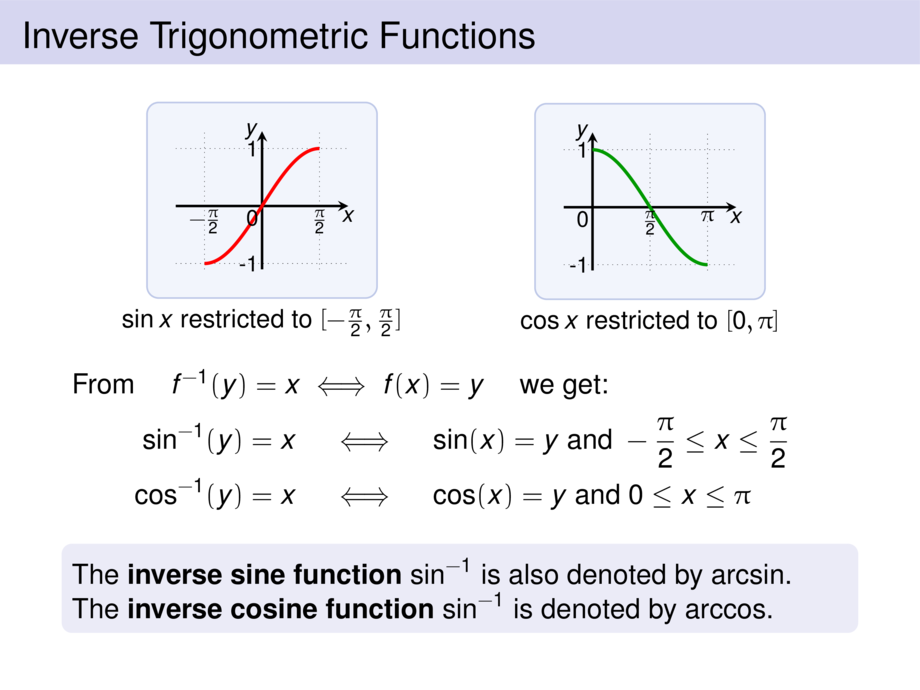



































































































277/353
\begin{frame}
\frametitle{Inverse Trigonometric Functions}
\begin{minipage}{.49\textwidth}
\begin{center}
\scalebox{.8}{
\begin{tikzpicture}[default,baseline=0cm]
\diagram{-1.5}{1.5}{-1.1}{1.3}{1}
\begin{scope}[ultra thick]
\draw[cred] plot[smooth,domain=-1:1,samples=300] (\x,{sin(\x*90)});
\end{scope}
\diagramannotatez
\diagramannotatexx{-1/$-\frac{\pi}{2}$,1/$\frac{\pi}{2}$}
\diagramannotatey{1,-1}
\end{tikzpicture}
}\\[.5ex]
{\small $\sin x$ restricted to $[-\frac{\pi}{2},\frac{\pi}{2}]$}
\end{center}
\end{minipage}
\begin{minipage}{.49\textwidth}
\begin{center}
\scalebox{.8}{
\begin{tikzpicture}[default,baseline=0cm]
\diagram{-.5}{2.5}{-1.1}{1.3}{1}
\begin{scope}[ultra thick]
\draw[cgreen] plot[smooth,domain=0:2,samples=300] (\x,{cos(\x*90)});
\end{scope}
\diagramannotatez
\diagramannotatexx{1/$\frac{\pi}{2}$,2/$\pi$}
\diagramannotatey{1,-1}
\end{tikzpicture}
}\\[.5ex]
{\small $\cos x$ restricted to $[0,\pi]$}
\end{center}
\end{minipage}
\pause\bigskip
From \quad $f^{-1}(y) = x \iff f(x) = y$ \quad we get:\pause
\begin{talign}
\sin^{-1}(y) = x \quad&\iff\quad \sin(x) = y \text{ and } -\frac{\pi}{2} \le x \le \frac{\pi}{2}\\
\mpause[1]{\cos^{-1}(y) = x} \quad&\mpause[1]{\iff\quad \cos(x) = y \text{ and } 0 \le x \le \pi}
\end{talign}
\pause\vspace{-2ex}
\begin{block}{}
The \emph{inverse sine function} $\sin^{-1}$ is also denoted by $\arcsin$.\\\pause
The \emph{inverse cosine function} $\sin^{-1}$ is denoted by $\arccos$.
\end{block}
\end{frame}

